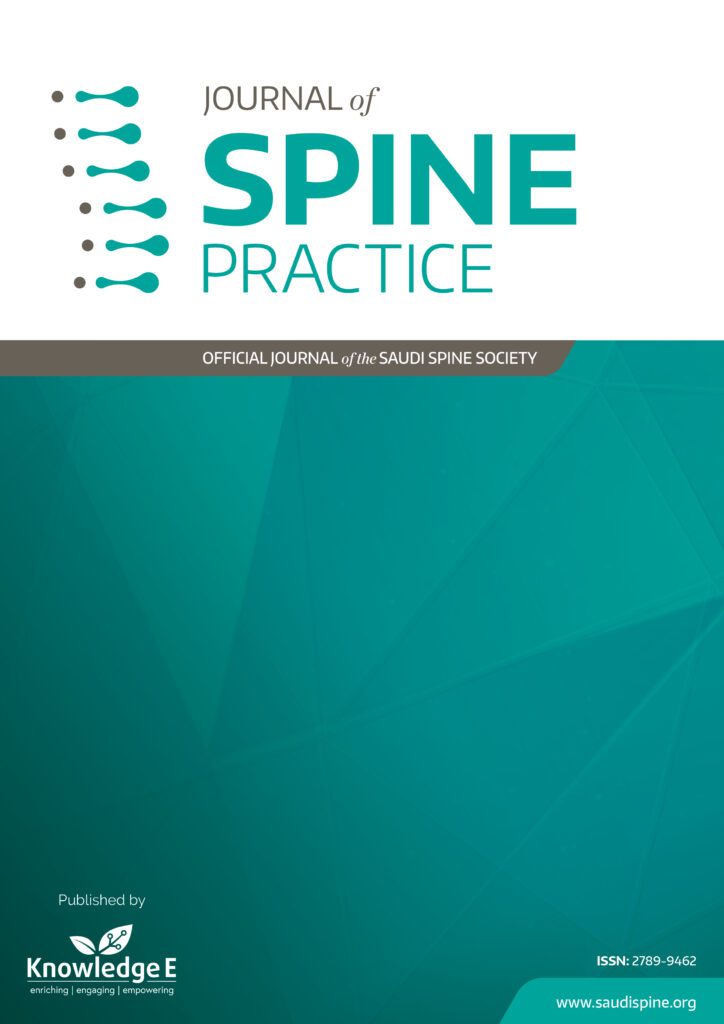
Journal of Spine Practice
ISSN: 2789-9462
Leading research in all spine subspecialties focusing on orthopaedic spine, neurosurgery, radiology, and pain management.
Core Stabilization Exercise on the Lumbar Lordosis and Pelvic Inclination Among Chronic Nonspecific Low Back Pain Patients
Published date: Nov 07 2021
Journal Title: Journal of Spine Practice
Issue title: Journal of Spine Practice (JSP): Volume 1, Issue 1
Pages: 18
Authors:
Abstract:
Introduction: Chronic low back pain (CLBP) is one of the most common musculoskeletal disorders and it is documented that >90% of the cases have no defined cause for pain, called nonspecific low back pain (NSLBP). Alteration in the joint position, abnormal posture, and impaired muscle recruitment may result in recurrent CLBP. Lumbar lordosis (LL) provides strength against the compressive forces of gravity and it also protects the posterior spinal ligament and acts as a shock absorber for vertical forces. Increased LL is considered as a reason for radiculopathy, facet pain, and postural pain. Spinal posture and pelvic position were analyzed and documented as altered in CLBP patients. Anatomically, the anterior and posterior tilt of the back and pelvis by the force of different muscles can alter the spinal curvature. Posterior pelvic tilt in a standing position can decrease the LL. The pelvic inclination is related to the lumbar curve, and both are related to the performance and length of the back and abdominal muscles. Therefore, in this study, we aimed to evaluate the effect of core stabilization exercise on pain intensity, functional disability, LL, and pelvic inclination in NSLBP.
Methodology: A total of 63 patients aged between 20 and 60 years who met the selection criteria were included. All participants gave their written consent to participate in this study. Demographic data such as age, weight, height, and duration of the back pain were documented. Patients were asked to report their pain using the Visual Analogue Scale (VAS) and Disability in Roland Morris Disability Questionnaire (RMDQ). Exclusion criteria were participants with musculoskeletal disorders (osteoarthritis and rheumatoid arthritis) and a history of previous fractures and systemic diseases. DIERS Formetric 4D spine and posture analyzer were used to assess spinal alignment using the light-optical scanning method on the back of patient in standing position. Angle of LL: the angle formed by the apex of LL and the T12 and L5 spinous processes. Pelvic tilt is the orientation of the pelvis in respect to the thighbones and the rest of the body. Core stabilization exercises were given for 30 min, five days a week, for 12 sessions. Pre- and posttest values were documented and analyzed.
Result: In this experimental study, we used Pearson’s correlation coefficient to find the correlation between LL and pelvic inclination angle and found a strong positive correlation (r = 0.76; P = 0.001). The study showed that core stabilization exercise for 12 weeks’ duration had statistically significant reduction in the pain intensity (p < 0.01), functional disability (p < 0.002), LL (p < 0.05), and pelvic inclination angle (p < 0.05) among patients with chronic NSLBP.
Conclusion: From this research, we conclude that core stabilization exercises decrease the pain intensity, functional disability, LL, and pelvic inclination angle in patients with chronic NSLBP. Thus, evaluation of the lumbar curvature and pelvic inclination, and designing the appropriate exercise is recommended in the management of NSLBP.
References: